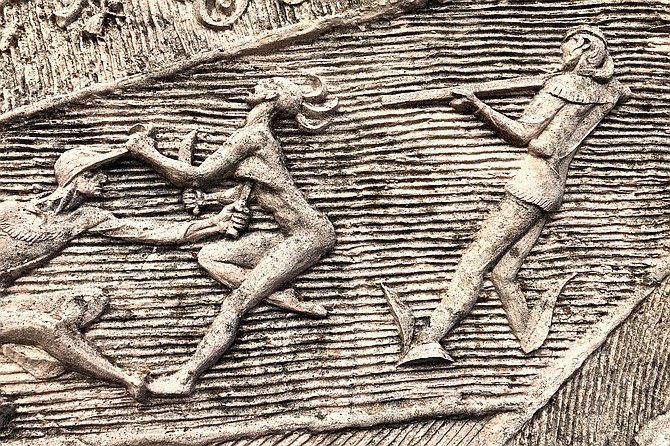Artist and educator Anne B. McKee used an arts-integrated curriculum students history about Samuel Dale, a controversial figure of Mississippi history who helped force the removal of Choctaws to Oklahoma. Pictured is a statue of him in Daleville, a town named for him in Lauderdale County. Photo by Donna Ladd
It is true. Mississippi is searching for a way to give students a quality education that engages them and makes them want to learn. How do we implement lessons for the students to understand and retain? And how do we teach while also trying to lessen disruptions from some of the students?
Try the arts. I'm a teaching artist in Mississippi. Sometimes my efforts haven't been effective due to disruptive students; however, I know that if I influenced one person, then I accomplished my mission.
During one incident in particular, some students arrived to the classroom sliding on their bellies, and others never raised their heads from taking naps on their desks. But one timid girl came to me after class with poetry she had composed. I saw hope in her eyes.
I left the school with several of her poems in my folder and later at home, I read them. It was a plea from a student who cared, a young girl who wanted more arts instruction. I made suggestions and offered a few critiques, then returned them to the middle school in her name, and I hope in some way the time I had at the school was not a total waste, because there was one student I was able to reach.
Yes, each child is teachable, even the ones who were on their bellies.
Let's face it. Teaching by sitting at a desk with a textbook in hand is boring. Arts could make it more fun. That day when the belly-sliders arrived, I was there to tell stories about Mississippi history. I brought simple costumes and a short dialogue. The story was about Samuel Dale, an early Mississippi soldier who helped force Choctaw migration from Mississippi to Oklahoma. Immediately, the belly sliders were onboard, wanting to know more, trying on costumes and learning the dialogue in the short time I had with them.
While I didn't reach all the students that day, I feel confident that the ones who participated in the vignette and remember Dale's story even now. It was Mississippi history I shared with the class using the art of drama.
I drew them into the story with me. The students became participants in a piece of documented Mississippi history, and the great thing is these rowdy middle-school students wanted to know more.
Again I ask, why not try the arts? We need a new approach in Mississippi, one that will include imagination and excitement, and will make the students ask, "What are we doing tomorrow?"
With an arts-integrated curriculum, students have a newly found yearning for education. Such a curriculum is simple but profound—make school fun again. The result is quality education, teaching through art disciplines.
How about teaching math integrated with dance steps or a science arts project? I remember one teacher asked students to bring bright-colored leaves to class. They crushed the leaves together in a wire colander to make paint for an art project. What student doesn't enjoy squashing and painting? And along the way, they learned the blades, veins and petiole of each specimen.
To help students master vocabulary, pronunciation, creativity and stage presence, a teacher could pass around a "story bag" with items inside for the students to choose from, then either individually or as a team, create a story using the item. Act it out, add costumes or write a song. The scenario is endless.
What does all of this really mean?
A student might start being excited about attending school. He or she will engage in learning—not just flip through a textbook soon forgotten. Parents can experience relief knowing their kids really want to go to school, and most students will hop out of bed to leave early for school and not miss a thing. Teachers can see students who are really learning. An arts-integrated curriculum may even help create better test scores.
Yes, each child is teachable. And the arts may be the answer for Mississippi
Anne B. McKee is a Mississippi history folklorist, with a twist, not just telling boring history but featuring the personalities who made the times unforgettable. She is active with storytelling circles which always focus on everything Mississippi. Anne is listed on the Mississippi Arts Commission's Performing Artist Roster and the Teaching Artist Roster.
This column does not necessarily reflect the views of the JFP.




Comments
Use the comment form below to begin a discussion about this content.